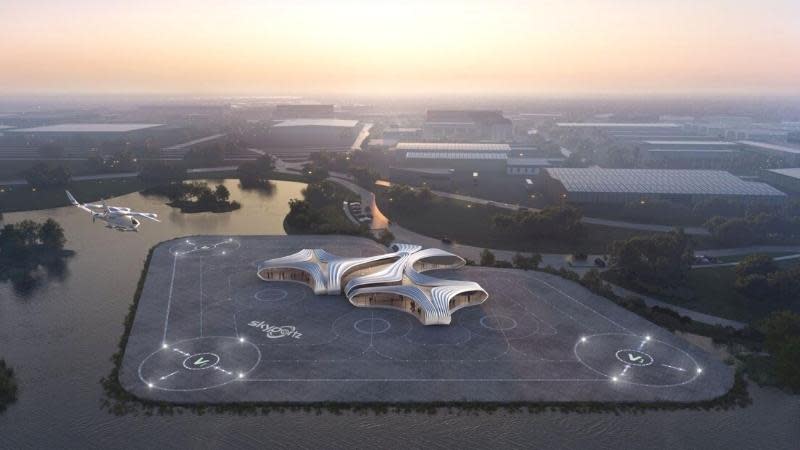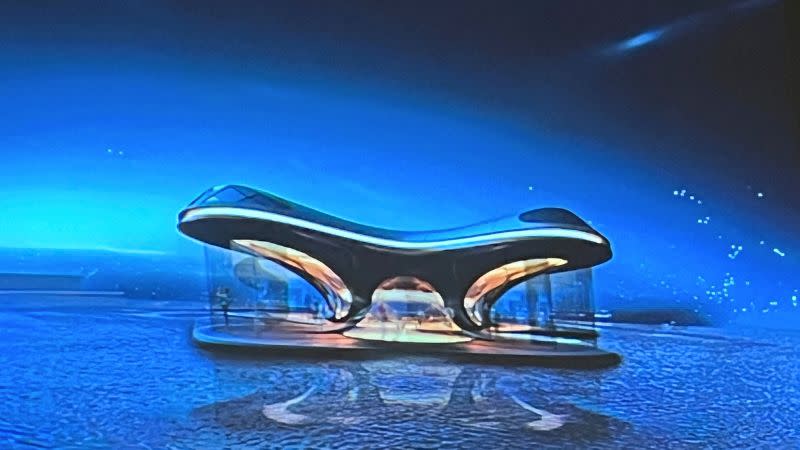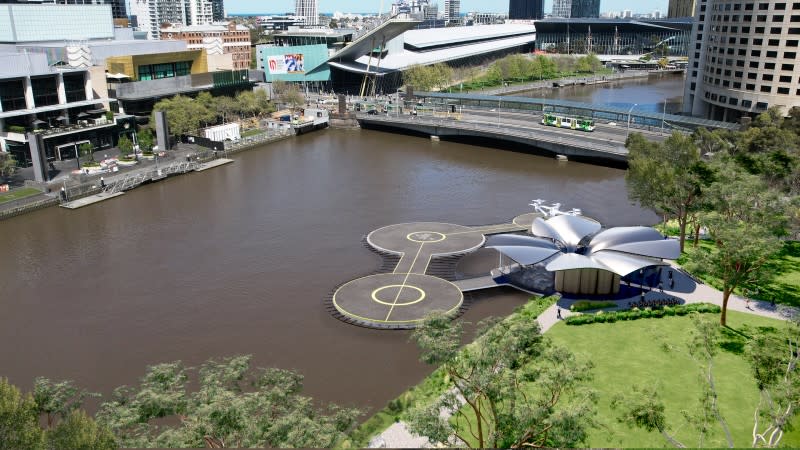Floating Facility Revealed for Melbourne’s Second Vertiport

Plans for a second vertiport in Melbourne have been revealed, this time on and next to the Yarra River.
Contreras Earl Architecture with Pascall and Watson Architects, and Skyportz have put forward an e-mobility hub for Batman Park, which is across the Yarra from Southbank.
The team plan to make a case to the City of Melbourne Council that the hub become part of the city’s Greenline Park project.
It would replace an existing heliport on the waterfront at the park.
Vertiports are micro-scale airports for aircraft that land and take off vertically. The vertiports can be built on land, waterfront sites or building rooftops.
Currently, The City of Melbourne’s Greenline Park project will include a multi-modal hub for electric scooters, bikes, ferries and hire boats.
Skyportz, Contreras Earl and Pascall and Watson will be releasing further details of the proposal at San Francisco’s World Air Taxi Congress later this week.
The first vertiport planned for Australia is the Caribbean Park terminal, also in Melbourne.

A cafe would be part of the development.
About 400 sites across the country have been identified as potential vertiport sites—including the retrofitting of existing buildings and carparks.
Skyportz believes electric air taxis will lead the decarbonisation of aviation and would use existing helicopter permissions to move users around metropolitan destinations quickly.
Melbourne could be one of the few cities in the world to have vertiports, according to Skyportz chief executive Clem Newton-Brown.
“Paris has five vertiports proposed for the Olympics next year, primarily using existing airports and helipads,” Newton-Brown said.
“The one new vertiport they have chosen is to be on the river.
“This aligns with our thinking that when cities need to choose vertiport locations, the lowest hanging fruit will be the waterfront locations, meaning this model has huge potential for wider roll out internationally.”

Contreras Earl Architecture director Rafael Contreras said Melbourne was leading the way internationally.
Speaking at The Urban Developer’s Urbanity 23 this year, Contreras said his passion for vertiports and air taxis was about making cities work for their residents again.
“Buildings that don’t have consideration for the people, for the city … they are basically killing our cities,” Contreras said.
Microflite operates the existing Melbourne Heliport at Batman Park—chief executive Rod Higgins believes that helicopters may soon be replaced by air taxis.
“There is no doubt that helicopters will soon be phased out in tourism and short commuter flights and Microflite wants to lead the way in decarbonising aviation as soon as electric aircraft are certified for commercial use,” Higgins said.

“Of the many thousands of passengers and tourists that Microflite fly from its Melbourne Heliport each year, an increasing number are asking when the aviation industry will be progressing to sustainable operations.”
Microflite will be replacing its fleet of traditional helicopters with electric aircraft within the next five years.
The Victorian government has released a Victorian Advanced Air Mobility Action Plan to encourage investment into clean energy industries, technology and jobs in the aerospace, advanced manufacturing and renewables sectors.
Part of the plan states that investment in such technology will allow for zero-emission options for logistics, service delivery, emergency services, passenger transport and regional connectivity.
Skyportz also confirmed that it is securing potential sites and assisting developers future proof their projects by adding access to air taxis and freight services when operational.














